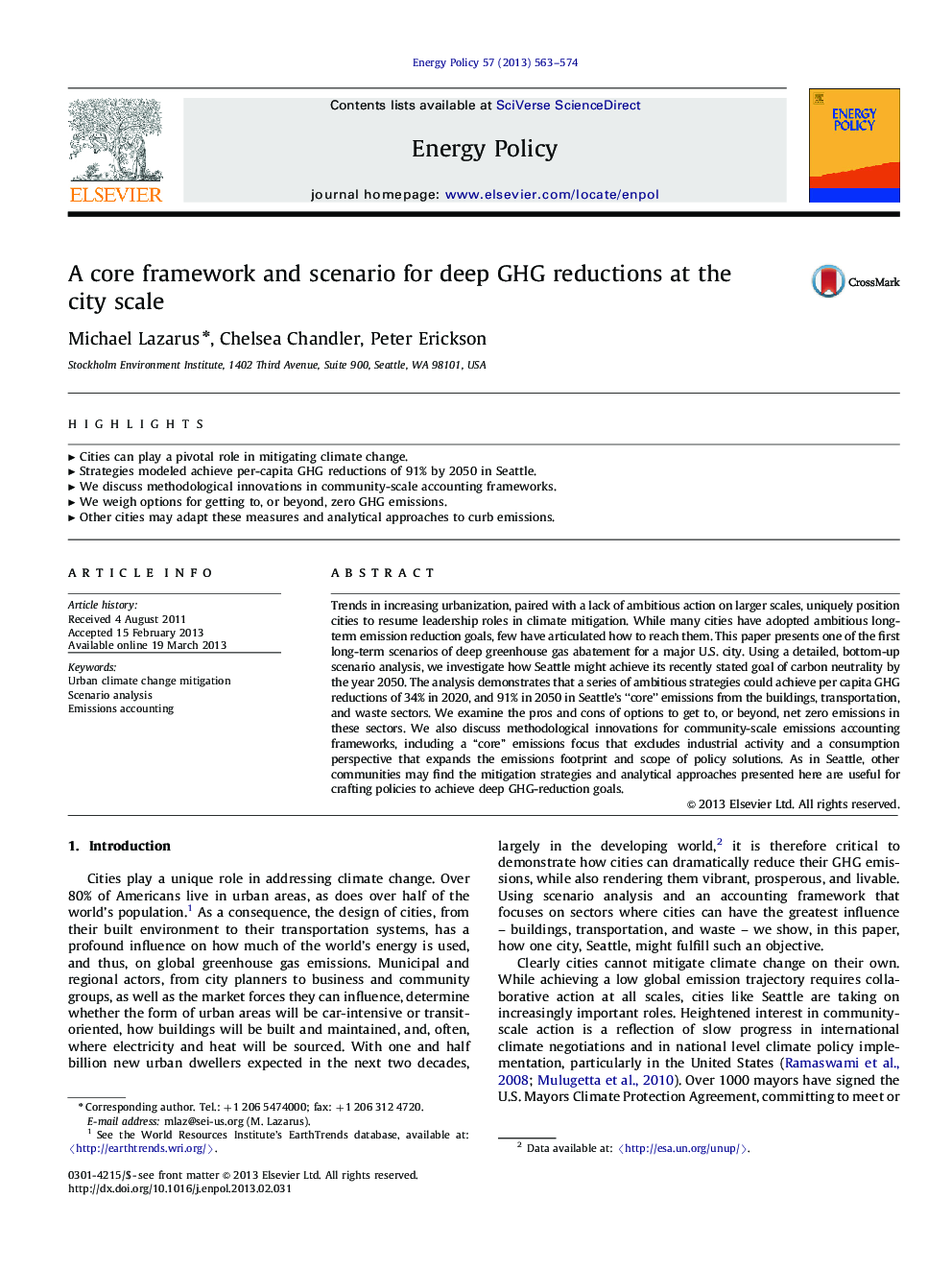| Article ID | Journal | Published Year | Pages | File Type |
|---|---|---|---|---|
| 992999 | Energy Policy | 2013 | 12 Pages |
Trends in increasing urbanization, paired with a lack of ambitious action on larger scales, uniquely position cities to resume leadership roles in climate mitigation. While many cities have adopted ambitious long-term emission reduction goals, few have articulated how to reach them. This paper presents one of the first long-term scenarios of deep greenhouse gas abatement for a major U.S. city. Using a detailed, bottom-up scenario analysis, we investigate how Seattle might achieve its recently stated goal of carbon neutrality by the year 2050. The analysis demonstrates that a series of ambitious strategies could achieve per capita GHG reductions of 34% in 2020, and 91% in 2050 in Seattle's “core” emissions from the buildings, transportation, and waste sectors. We examine the pros and cons of options to get to, or beyond, net zero emissions in these sectors. We also discuss methodological innovations for community-scale emissions accounting frameworks, including a “core” emissions focus that excludes industrial activity and a consumption perspective that expands the emissions footprint and scope of policy solutions. As in Seattle, other communities may find the mitigation strategies and analytical approaches presented here are useful for crafting policies to achieve deep GHG-reduction goals.
► Cities can play a pivotal role in mitigating climate change. ► Strategies modeled achieve per-capita GHG reductions of 91% by 2050 in Seattle. ► We discuss methodological innovations in community-scale accounting frameworks. ► We weigh options for getting to, or beyond, zero GHG emissions. ► Other cities may adapt these measures and analytical approaches to curb emissions.
